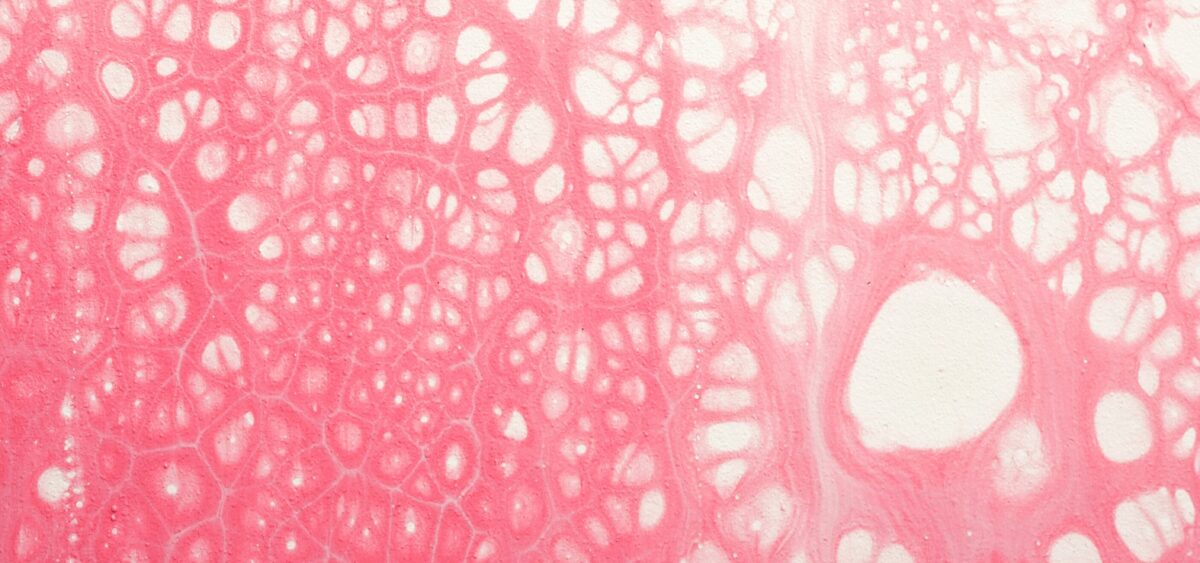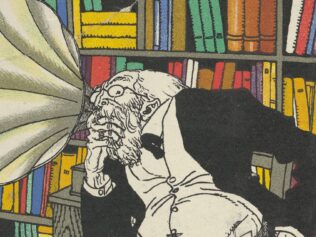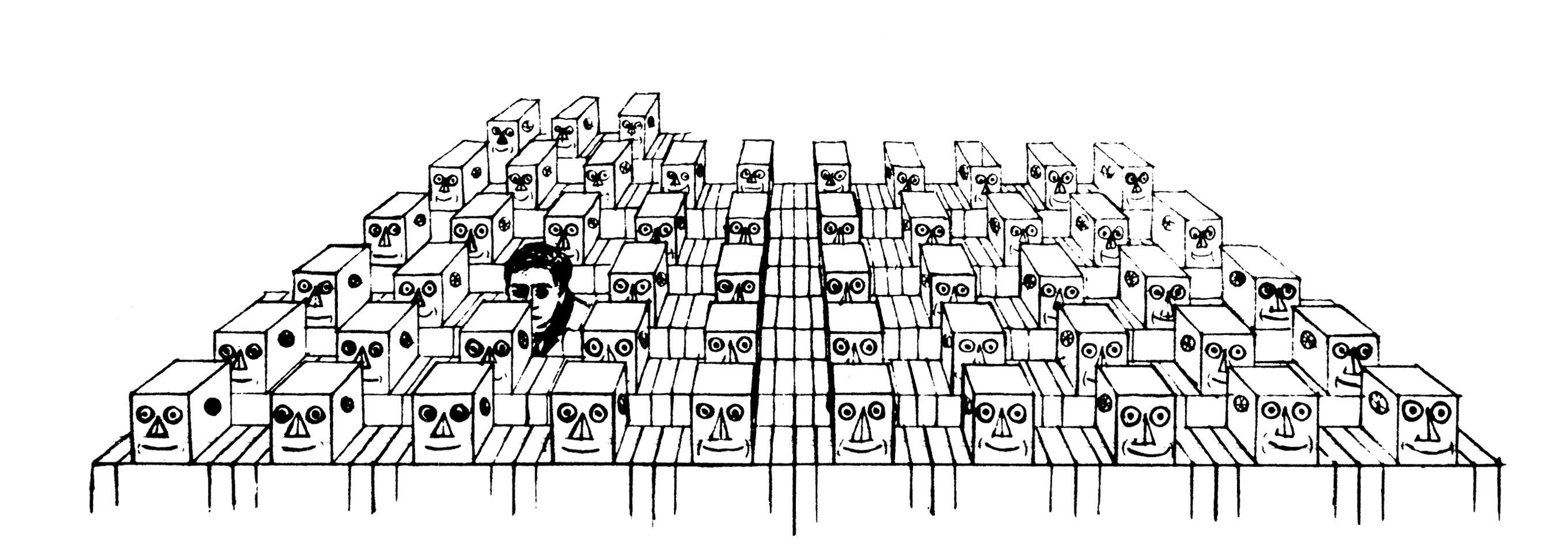
Some Indigenous Australians would sprinkle young men’s blood on the elderly, believing it would delay the ageing process. Now, scientists from California want to pump young blood into old veins, expecting it to make them some money.
On 14th November 1666, the famous diarist Samuel Pepys witnessed an exciting show organized by the British Royal Society: what he saw was one of the first blood transfusions in history. The experiment was carried out on two dogs, connecting a mastiff’s artery with a spaniel’s vein. The mastiff died during the experiment – a necessary sacrifice on the altar of science – while the spaniel received a significant amount of the other dog’s blood, losing a lot of his own in the process. The procedure was deemed successful, and Mr. Pepys described the experiment as “pretty.” He also mentioned the experiment “did give occasion to many pretty wishes, as of the blood of a Quaker to be let into an Archbishop, and such like.”
In her book Blood Work, Holly Tucker adds another detail to the story: after a week, the spaniel was brought in front of the Royal Society Council. It was observed that the dog had grown; not as large as the mastiff had been, but it did put on weight.
Were the sage men expecting the procedure to turn a spaniel into mastiff, just like the audience believed the blood of a benevolent Quaker would change the ways of a stern archbishop? They surely didn’t rule it out. Robert Boyle, who was one of the top scientists of that time, wrote that experiments with blood transfusion were supposed to provide answers to substantial questions: Can the blood of a poor-spirited animal transform a fearless hound into a coward? Could young blood rejuvenate the elderly, and vice versa? Also, could blood transfusion change the dog’s breed?
French physician Jean-Baptiste Denys operated under similar premises, when a year later he administered a calf’s blood transfusion to a madman, Antoine Mauroy, hoping that the procedure would help the overactive patient to calm down. Malroy died after the transfusion, and in consequence, the procedure was banned in France and condemned by the Pope. Further experiments were abandoned for many years all over Europe.
Resurrecting Washington
The experiments described above were carried out soon after Descartes claimed that the pineal gland, located in the centre of the brain, was the organ connecting the soul to the body. However, another much older theory was alive and well among physicians: it was believed that blood was the seat of the soul (either on its own or along with breath). The origin of this belief is lost to history. Ever since humans had developed the ability to ponder upon anything at all, they must have marvelled at the power of blood. They could see that when too much of this mysterious liquid came out of the veins, the person would die. They also noticed a close link between menstruation and fertility.
“For the life of the flesh is in the blood,” says God in the Bible (Leviticus 17:11). Similar notions were accepted as valid in ancient China, Greece, and Rome. Some tribes still believe it to this day. Blood is strength and life, claim the people of an ancient tribe of Baruya from Papua New Guinea. According to the Bambara people from Mali, blood and head are home to tere – one’s personality and identity. The Dogon from West Africa believe blood to be the source of yama – vital forces, life, and movement. Jean-Paul Roux lists all of these examples in his book Le Sang. Mythes, symboles et réalités [Blood: Myths, Symbols, Reality].
Roux also mentions that “in Australia, it is a common practice for young men to cut their forearm veins open and sprinkle the blood on the elderly in order to stop the ageing process.” This “generous wine-like liquid”, as described by the people of Ubangi-Shari (today’s Central African Republic) can, therefore, bring one’s vigour back. Or perhaps it is the release of old or foul blood from the body that could rejuvenate the body. Anthropologist Ian Hogbin studied the customs of the people of Wogeo from New Guinea, who believed that menstruation is a cleansing process with many benefits for women. Wogeo men had to find another way to protect themselves from illness, so they practised penile bloodletting instead (the procedure was described as male menstruation). We can also find examples closer to European culture. Ovid tells a story about Medea healing Aeson, Jason’s father, by replacing his poor quality blood with some mysterious substance. We also know the story of Asclepius, the Greek god of medicine. The most potent substance he owned was the blood of Medusa, a monster killed by Perseus. The blood flowing through the left side of her body was a deadly poison, while the blood from the right side could bring the dead back to life.
Those are the myths on which bloodletting therapy was founded. It had been regarded as a cure-all remedy for centuries, from ancient times to the 19th century. But since no physician had access to Medea’s magical fluid that they could use to refill the veins they had just emptied, they settled for only the first part of the treatment as described by Ovid. That is, removing some content from the veins. They cited ancient physicians – Hippocrates and Galen – insisting that the procedure allows restoring humoral equilibrium, the humours being blood, phlegm, yellow bile, and black bile (we don’t know what exactly black bile was supposed to be).
In most cases, bloodletting (done either through venesection or with the use of medicinal leeches) couldn’t do anything to improve the patient’s condition, and, in many cases, it led to a tragic end. George Washington’s death in 1799 was a striking example of bloodletting gone very wrong. When leech application did not bring the expected results, physicians had only one solution: repeat. In the end, the procedure was carried out four times, and would have kept going had Washington not died in the process.
The next morning Washington’s granddaughter introduced the family to a new physician, Dr. William Thornton, who promised to bring the Founding Father back to life by giving him a transfusion of lamb’s blood. However, the relatives quickly overruled the plan to resurrect the president. Not because they doubted Mr. Thornton’s expertise; they just explained it would be better for Washington to pass away with dignity, “full of honour and renown.” It’s possible the family was worried that lamb’s blood would inflict some animalistic qualities upon the deceased.
The universal liquid
In the 19th century, Louis Pasteur and Joseph Lister demonstrated that microorganisms have a measurable impact on human health, thus bringing ‘humoral medicine’ to an end. In the same century, French physician Pierre Charles Alexandre Louis initiated the use of statistics in medicine – after interviewing 2000 patients at the Paris hospital of La Pitié, he deemed bloodletting to be decidedly less beneficial than claimed.
In 1902, Karl Landsteiner discovered blood types, making blood transfusions safe. For centuries physicians were drawing blood out of human bodies. However, now they were finally able to refill their patients’ veins, saving thousands of lives and proving something fundamental: the liquid that flows through our veins is not that special.
This cognitive revolution was sealed with the discovery of DNA in the mid-20th century. Biological differences between humans and between other organisms finally had an explanation. Thanks to all of these discoveries, views on blood have drastically changed – from a carrier of more or less exceptional features, to a universal liquid filling the pipelines of humanity. Still, hospitals in many Southern states in America insisted on blood segregation and only administering white donors’ blood to white patients (for blatantly racist reasons and against expert opinions on the matter).
It was a steep learning curve, but we finally learned who could become a blood donor. However, another question remained unanswered, and this one went beyond the scope of medicine: Who should receive blood? Who deserves it most?
Polish-Hungarian brotherhood
The first blood bank was established in Leningrad in 1932 (although it was not called this at the time – the name was conjured later in the US). It was an impressive feat, inspiring the whole medical world. The centre would supply blood to the 41 nearest hospitals. It was hardly due to the exceptional community spirit shared by the citizens of USSR. Most importantly, the Soviet Union was a totalitarian state, which made every initiative with head office approval develop at a staggering pace – whether the people liked it or not.
Another place with an efficient blood donation system was Barcelona during the civil war. In this case, however, the sense of community was vital. Not only because of shared republican values, but also due to society going through a military crisis. During war, citizens are ready to share their blood with the wounded, as long as they are all on the same side. They are keen to refill the spilt blood of their heroes with their own.
The first significant blood donation-related project the US embarked on was sending blood supplies to the United Kingdom when the threat of Hitler’s invasion was looming over Britain. Poland went through a similar path. Even though the Red Cross was setting up blood donation centres already in the 1930s, the largest wave of volunteer blood donations came in 1956 with an initiative ‘Blood for our Hungarian brothers’. It provided medical help, but it also served as a powerful symbolic gesture. Even now, Viktor Orbán refers to Poles as Hungary’s blood brothers.
After this, voluntary blood donation in the Polish People’s Republic flourished. There were shortages of almost everything, but there was hardly ever not enough blood available for transfusions. The situation worsened after 1989, for many reasons. Many large workplaces ceased to exist, which was a significant factor, as they usually ran volunteer blood donors’ clubs for employees. Many privileges formerly enjoyed by distinguished blood donors were cancelled, which also disheartened many people from participating. Today, Poland is suffering from blood shortages (and not because fewer people can be donors now, nor because they are afraid to participate). They don’t hesitate to donate blood when their relatives or friends need it. Yet something is stopping them from being equally enthusiastic about sharing the contents of their veins with strangers.
Radioactive and pure
The ancient blood mythology is still alive in language. “My flesh and blood,” we say of our children; we mention blood ties and hot-blooded tempers. Pop culture is also steeped in blood imagery, just to mention horror movies about vampires who drink blood to sustain their youth, or the cartoon hero Spiderman, whose radioactive blood gives him supernatural strength (“Is he strong? Listen, bud. He’s got radioactive blood!”, as the theme song states).
Blood-centred narratives also appear in politics. During the 2017 Polish Independence Day march in Warsaw, a group of participants carried a black banner with a simple message, written in white capitals: ‘Pure blood – clear mind’. Let’s not dwell on the question of whether someone who believes such claims can indeed boast a clear mind, and instead focus on another issue: why the word ‘blood’, and not, say, ‘genotype’? The authors of this banner were referring to archaic narratives about blood – red, life-giving blood running through our veins is much more persuasive fodder for the imagination than microscopic DNA spirals of nondescript colour. As the Baruya people say: blood is strength and life.
And what about science and medicine? Even if we make a somewhat far-fetched assumption that these fields are free of preconceived mythical notions, we cannot ignore the fact that they function in a society in which those myths are still alive. To illustrate this point, let’s take a look at a more recent story.
The fall of the King of Cotton Yarn
In 2012, Karoly Nikolich, an entrepreneur and neuroscientist at Stanford University in California, went for a business trip to Hong Kong. He was there to meet the family of the late Chinese billionaire Chen Din-Ha, known as the King of Cotton Yarn. Chen Din-Ha had passed away three years prior at the age of 89, after having suffered from Alzheimer’s disease towards the end of his life. Dementia had devoured his mind so severely that he couldn’t even recognize his own family. Until one day, soon before his passing, he received a blood transfusion for some unrelated condition (according to The Guardian). Soon after, the family observed something remarkable: Chen regained his memory and clarity of mind. Was it a coincidence, wishful thinking, or the unspecified amount of fresh blood he received that reversed his dementia? We’ll never know.
It wasn’t difficult for Nikolich to convince the billionaire’s heirs to invest in research on the impact young blood could have on treating Alzheimer’s disease. And that’s how Alkahest, Inc. came into existence.
Alkahest’s scientific advisory board is chaired by biologist Tony Wyss-Coray, who also works at Stanford and has been researching Alzheimer’s disease since the 1990s. Wyss-Coray had his first international success in 2007 when he developed a test that could allegedly detect the disease several years before the early symptoms appear, by testing for specific plasma proteins. The discovery caused a stir in newspapers worldwide. However, not many news outlets mentioned Wyss-Coray’s subsequent findings, which ultimately disproved the test’s credibility.
Wyss-Coray did not let the failure deter him. He carried on, set on an even more challenging task: to stop Alzheimer’s disease altogether, with the use of blood.
The researcher had reasons to believe this plan could be successful. In the 1950s, American scientists Frank Pope, Wanda Lunsford[1] and Clive McCay carried out a series of experiments in which they linked the cardiovascular systems of pairs of mice, stitching old rodents to young ones. This procedure, known as heterochronic parabiosis, gave similar results to what Robert Boyle would have expected back in the 17th century – the young mouse got biologically older, and the senior mouse got a little younger. In 1972, another American research team proved that the procedure extended the old mouse’s lifespan. And then in the 1980s, Soviet scientists demonstrated parabiosis to delay cognitive erosion in elderly rodents.
The experiments were forgotten for years. Only in the early 21st century did scientists remember these extraordinary results.
It was at Stanford that the research on parabiosis was picked up again. In 2005, Wyss-Coray’s superior Thomas Rando conducted experiments on mice that demonstrated young blood’s ability to activate stem cells in old bodies, leading to the regeneration of internal organs. After that, Wyss-Coray took over the research. Following a few more experiments on rodents, he received permission to carry out tests on humans, and the results were published last year.
The fluid for the rich
Actually, ‘published’ might not be the best way of putting it. The researchers from California chose a more subtle path. They did not submit their findings to any scientific magazine. They only announced that their tests proved the procedure to be safe and that they achieved an unexpected success: patients’ health improved. They also promised to share the results in detail at a scientific conference, and they kept their promise. That’s when it became clear that the improvement is minimal and very subjective (noticed only by the patients’ carers, but not confirmed by any external test results). It was utterly insignificant.
Why was the result so unsatisfying? It’s no secret that most therapies that work on mice don’t have the same outcome when tested on humans. Moreover, parabiosis is very different from transfusions. The former refers to constant blood-sharing by both organisms, and the latter is by its nature a temporary and limited solution. The patients tested by Wyss-Coray would receive four ounces of plasma once a week, which is no match to parabiosis. Before the experiment, even Wyss-Coray himself admitted that he was not expecting any miracles. In his opinion, for the therapy to work, the scientists would have to produce a condensed blood mixture, consisting of highly concentrated anti-ageing blood components. In order to prepare such a cocktail, we would need to be able to identify the crucial elements, and use plasma from many donors.
Karoly Nikolich is aware of this obstacle. He estimates that all the blood banks in the world would only provide enough blood to meet the needs of 500,000 dementia patients. Meanwhile, over 50 million people suffer from dementia worldwide, and the number is continually growing higher.
However, it’s not a problem from a business point of view; quite the contrary. The more people who have Alzheimer’s disease, the more wealthy patients will be queuing to pay any money for a cure that can slow down their worsening dementia. It doesn’t matter whether the progress is insignificant and short-lived; even if it’s just subjective. Just one day of better interaction with a dementia patient is a celebration for their family. It would take a lot of blood, but so what? Blood can be bought. There are plenty of penniless young people to go around.
At least the owners of the Spanish company Grifols, the largest producer of blood-based products in the world, see a prime business opportunity here. In 2015, the company made a major investment, spending $37.5 million on 45% equity of Alkahest. The therapy should be available in the second half of the 2020s (or should we say, unavailable, as the price is going to be impossible to afford for most people).
Let’s now imagine that in a dozen or so years, the Earth is visited by a traveller from another planet, who wants to explore our customs. They might write a note in their journal, saying: “One of the native’s practices seemed particularly interesting to me: juvenile humans regularly donate their blood, which is then used to create a fluid administered to a small group of chosen elderly.” Then they would try – to no avail – to figure out the rules of selecting the privileged seniors, as well as the point of the whole ritual.
Translated from the Polish by Aga Zano










